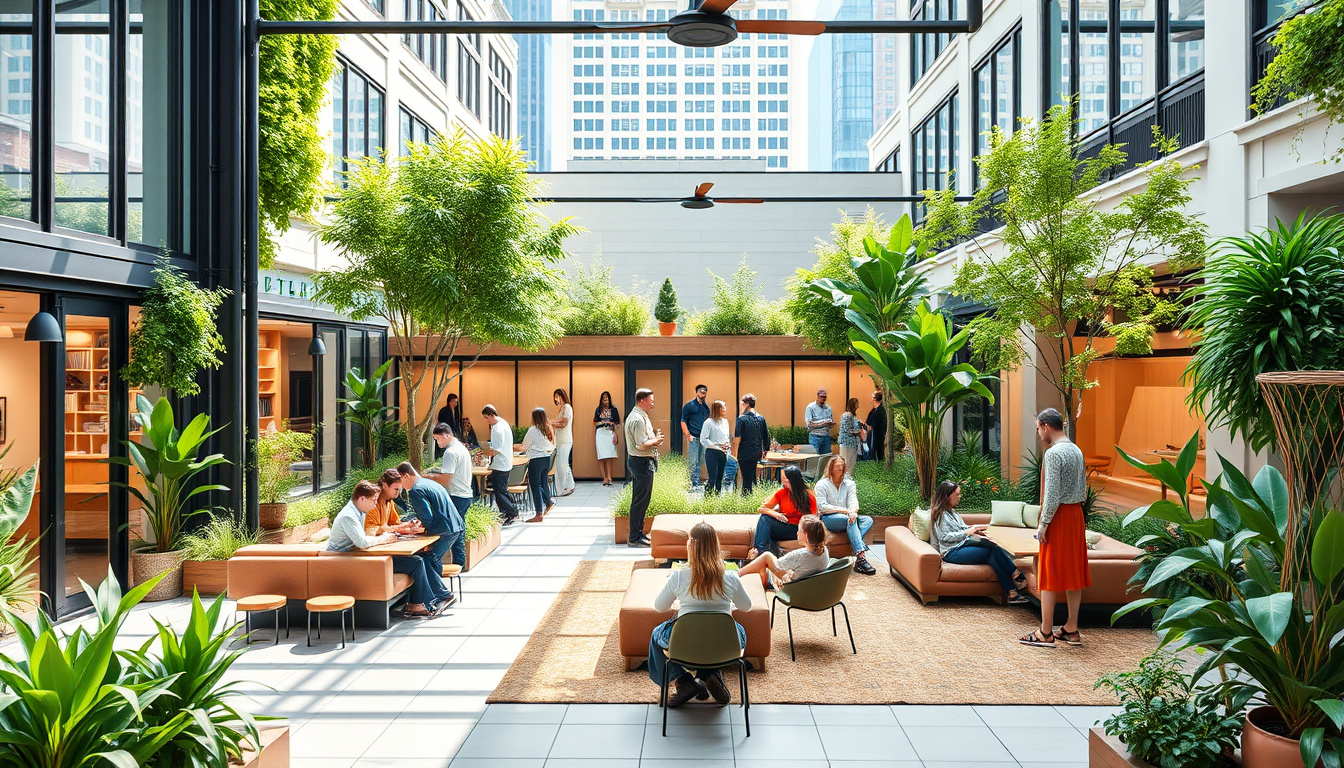In recent years, co-living developments have emerged as a pioneering solution to modern urban challenges, providing a fresh approach to community living in densely populated areas. Combining the advantages of shared spaces with the comforts of private accommodations, co-living is redefining how we experience urban life. As cities continue to grow, the demand for affordable housing, community interaction, and innovative living arrangements has skyrocketed. This article delves into the concept of co-living developments, explores the trends propelling their rise, and discusses their potential to foster connected communities. Whether you’re a potential resident, investor, or simply curious about new housing trends, join us as we explore this transformative approach to urban living.

Key Takeaways
- Co-living developments promote shared living spaces that enhance social interaction.
- The rise of remote work has accelerated the demand for co-living as a more flexible housing solution.
- Co-living fosters a sense of community, reducing feelings of isolation in urban environments.
- Economic factors, such as rising housing costs, are driving more people towards co-living arrangements.
- Co-living developments are transforming urban landscapes by creating multifunctional shared spaces.
Understanding Co-Living Developments: Concept and Benefits
Co-living developments have emerged as a transformative approach to urban living, catering to the evolving needs and preferences of modern residents. At their core, co-living developments are shared housing arrangements that promote community, collaboration, and sustainability. These spaces typically consist of private bedrooms complemented by shared communal areas such as kitchens, lounges, and workspaces, fostering interaction among residents. The benefits of co-living developments are manifold. They offer an affordable housing solution in high-demand urban areas, appealing to young professionals, students, and remote workers who seek flexibility and convenience. Additionally, co-living promotes social connections and networking opportunities, often culminating in a sense of belonging within the community. With utilities and amenities often included in the rent, residents enjoy a hassle-free living experience. As urbanization continues to rise, understanding co-living developments and their advantages becomes essential for anyone seeking a modern, connected lifestyle.
The Evolution of Urban Living: Trends Driving Co-Living
As urban centers continue to grow, co-living developments are transforming the way we think about shared living spaces. Designed to foster community and collaboration, these modern housing arrangements have gained traction among millennials and young professionals seeking affordable, flexible living solutions in cities. The rise of remote work culture has also contributed to this trend, as individuals are increasingly looking for accommodations that not only provide a roof over their heads but also a sense of belonging. Co-living spaces often feature shared amenities such as kitchens, lounges, and co-working areas, making them ideal for social interaction and networking. Furthermore, with cities experiencing a housing crisis, these developments offer innovative solutions by maximizing space efficiency and providing residents with an opportunity to live sustainably. As we explore the evolution of urban living, it becomes clear that co-living is not just a temporary trend but a reflection of shifting lifestyles and preferences in an ever-changing world.
‘The greatness of a community is most accurately measured by the compassionate actions of its members.’ — Coretta Scott King

Building a Connected Community: Social and Economic Impacts of Co-Living
Co-living developments are increasingly becoming a popular solution for urban dwellers seeking affordability, convenience, and connection. These modern living spaces not only provide shared amenities and resources but also foster a sense of community among residents. The social impacts of co-living are profound, as individuals from diverse backgrounds come together, creating rich interpersonal networks that enhance cooperation and collaboration. Economically, co-living developments can reduce the cost of living by sharing expenses such as utilities and maintenance, making them a viable option for young professionals and students alike. Furthermore, these communities often stimulate local economies, as they attract vibrant populations that contribute to neighborhood businesses. By prioritizing social interaction and economic efficiency, co-living developments are reshaping the way we think about housing and community living in urban areas.
Moose Realty
Mustafa “Moose” Aslamzada | Real Estate Agent
Royal LePage Signature Realty
[color=rgb(71, 71, 71)]30 Eglinton Ave W Suite 201, Mississauga, ON L5R 3E7[/color]
📞 647-988-7325 | ✉️ moose.a@royallepage.ca
🌐 www.MooseRealty.ca
Connect with Us
Facebook | Twitter | LinkedIn | Instagram
